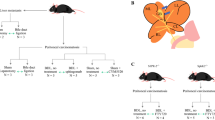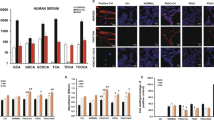Abstract
Unlike in normal cells, ursodeoxycholic acid (UDCA) causes apoptosis rather than protection in cancer cells. Aim of this study was to demonstrate whether UDCA actually inhibits proliferation and induces apoptosis in bile duct cancer cells; the effect of UDCA on the expression of COX-2, PI3K/AKT, ERK, and EGFR; how UDCA affects cancer cell invasiveness and metastasis, since these effects are not established in bile duct cancer cells. SNU-245 cells (human extrahepatic bile duct cancer cells) were cultured. MTT assays were performed to evaluate the effect of UDCA on the cell proliferation. A cell death detection enzyme-linked immunosorbent assay and a caspase-3 activity assay were used to determine apoptosis. Western blot analysis measured expression levels of various proteins. The invasiveness of the cancer cells was evaluated by invasion assay. In cultured bile duct cancer cells, UDCA suppressed cell proliferation in bile duct cancer cells by inducing apoptosis and p53 activation, blocking deoxycholic acid (DCA)-induced activated EGFR-ERK signaling and COX-2, inhibiting DCA-induced activated PI3K-AKT signaling, and suppressing the invasiveness of bile duct cancer cells. In addition, a MEK inhibitor impaired UDCA-induced apoptosis in bile duct cancer cells. UDCA has antineoplastic and apoptotic effects in bile duct cancer cells. Thus, UDCA could be a chemopreventive agent in patients with a high risk of cancer, and/or a therapeutic option that enhances other chemotherapeutics.





Similar content being viewed by others

Abbreviations
- UDCA:
-
Ursodeoxycholic acid
- COX-2:
-
Cyclooxygenase-2
- PI3K:
-
Phosphatidylinositol-4,5-bisphosphate 3-kinase
- AKT:
-
Protein kinase B
- ERK:
-
Extracellular signal-regulated kinase
- MAPK:
-
Mitogen-activated protein kinase
- MEK:
-
MAPK/ERK Kinase
- DCA:
-
Deoxycholic acid
- JNK:
-
C-Jun N-terminal kinase
- BCL-2:
-
B-cell lymphoma 2
- BAX:
-
BCL-2-like protein
- CCA:
-
Cholangiocarcinoma
- IGF-1R:
-
Insulin-like growth factor 1 receptor
- mTOR:
-
Mammalian target of rapamycin
References
Amaral JD, Castro RE, Sola S, Steer CJ, Rodrigues CM (2007) p53 is a key molecular target of ursodeoxycholic acid in regulating apoptosis. J Biol Chem 282:34250–34259. https://doi.org/10.1074/jbc.M704075200
Amaral JD, Viana RJ, Ramalho RM, Steer CJ, Rodrigues CM (2009) Bile acids: regulation of apoptosis by ursodeoxycholic acid. J Lipid Res 50:1721–1734. https://doi.org/10.1194/jlr.R900011-JLR200
Blechacz B (2017) Cholangiocarcinoma: current knowledge and new developments. Gut and liver 11:13–26. https://doi.org/10.5009/gnl15568
Brandsaeter B, Isoniemi H, Broome U, Olausson M, Backman L, Hansen B, Schrumpf E, Oksanen A, Ericzon BG, Hockerstedt K, Makisalo H, Kirkegaard P, Friman S, Bjoro K (2004) Liver transplantation for primary sclerosing cholangitis; predictors and consequences of hepatobiliary malignancy. J Hepatol 40:815–822. https://doi.org/10.1016/j.jhep.2004.01.002
Guicciardi ME, Gores GJ (2002) Ursodeoxycholic acid cytoprotection: dancing with death receptors and survival pathways. Hepatology 35:971–973. https://doi.org/10.1053/jhep.2002.32931
Hayashi N, Yamamoto H, Hiraoka N, Dono K, Ito Y, Okami J, Kondo M, Nagano H, Umeshita K, Sakon M, Matsuura N, Nakamori S, Monden M (2001) Differential expression of cyclooxygenase-2 (COX-2) in human bile duct epithelial cells and bile duct neoplasm. Hepatology 34:638–650. https://doi.org/10.1053/jhep.2001.28198
Hirschfield GM, Dyson JK, Alexander GJM, Chapman MH, Collier J, Hübscher S, Patanwala I, Pereira SP, Thain C, Thorburn D, Tiniakos D, Walmsley M, Webster G, Jones DEJ (2018) The British Society of Gastroenterology/UK-PBC primary biliary cholangitis treatment and management guidelines. Gut 67:1568–1594. https://doi.org/10.1136/gutjnl-2017-315259
Khare S, Mustafi R, Cerda S, Yuan W, Jagadeeswaran S, Dougherty U, Tretiakova M, Samarel A, Cohen G, Wang J, Moore C, Wali R, Holgren C, Joseph L, Fichera A, Li YC, Bissonnette M (2008) Ursodeoxycholic acid suppresses Cox-2 expression in colon cancer: roles of Ras, p38, and CCAAT/enhancer-binding protein. Nutr Cancer 60:389–400. https://doi.org/10.1080/01635580701883003
King D, Yeomanson D, Bryant HE (2015) PI3King the lock: targeting the PI3K/Akt/mTOR pathway as a novel therapeutic strategy in neuroblastoma. J Pediatr Hematol Oncol 37:245–251. https://doi.org/10.1097/mph.0000000000000329
Ku JL, Yoon KA, Kim IJ, Kim WH, Jang JY, Suh KS, Kim SW, Park YH, Hwang JH, Yoon YB, Park JG (2002) Establishment and characterisation of six human biliary tract cancer cell lines. Br J Cancer 87:187–193. https://doi.org/10.1038/sj.bjc.6600440
Lee J, Hong EM, Kim JH, Jung JH, Park SW, Koh DH, Choi MH, Jang HJ, Kae SH (2019) Metformin induces apoptosis and inhibits proliferation through the AMP-activated protein kinase and insulin-like growth factor 1 receptor pathways in the bile duct cancer cells. J Cancer 10:1734–1744. https://doi.org/10.7150/jca.26380
Lee S, Cho YY, Cho EJ, Yu SJ, Lee JH, Yoon JH, Kim YJ (2018) Synergistic effect of ursodeoxycholic acid on the antitumor activity of sorafenib in hepatocellular carcinoma cells via modulation of STAT3 and ERK. Int J Mol Med 42:2551–2559. https://doi.org/10.3892/ijmm.2018.3807
Lim SC, Duong HQ, Parajuli KR, Han SI (2012) Pro-apoptotic role of the MEK/ERK pathway in ursodeoxycholic acid-induced apoptosis in SNU601 gastric cancer cells. Oncol Rep 28:1429–1434. https://doi.org/10.3892/or.2012.1918
Liu H, Qin CY, Han GQ, Xu HW, Meng M, Yang Z (2007) Mechanism of apoptotic effects induced selectively by ursodeoxycholic acid on human hepatoma cell lines. World J Gastroenterol: WJG 13:1652–1658. https://doi.org/10.3748/wjg.v13.i11.1652
Liu H, Xu HW, Zhang YZ, Huang Y, Han GQ, Liang TJ, Wei LL, Qin CY, Qin CK (2015) Ursodeoxycholic acid induces apoptosis in hepatocellular carcinoma xenografts in mice. World J Gastroenterol: WJG 21:10367–10374. https://doi.org/10.3748/wjg.v21.i36.10367
Matsuoka H, Tsubaki M, Yamazoe Y, Ogaki M, Satou T, Itoh T, Kusunoki T, Nishida S (2009) Tamoxifen inhibits tumor cell invasion and metastasis in mouse melanoma through suppression of PKC/MEK/ERK and PKC/PI3K/Akt pathways. Exp Cell Res 315:2022–2032. https://doi.org/10.1016/j.yexcr.2009.04.009
Ojeda L, Gao J, Hooten KG, Wang E, Thonhoff JR, Dunn TJ, Gao T, Wu P (2011) Critical role of PI3K/Akt/GSK3beta in motoneuron specification from human neural stem cells in response to FGF2 and EGF. PLoS ONE 6:e23414. https://doi.org/10.1371/journal.pone.0023414
Olsson R, Boberg KM, de Muckadell OS, Lindgren S, Hultcrantz R, Folvik G, Bell H, Gangsoy-Kristiansen M, Matre J, Rydning A, Wikman O, Danielsson A, Sandberg-Gertzen H, Ung KA, Eriksson A, Loof L, Prytz H, Marschall HU, Broome U (2005) High-dose ursodeoxycholic acid in primary sclerosing cholangitis: a 5-year multicenter, randomized, controlled study. Gastroenterology 129:1464–1472. https://doi.org/10.1053/j.gastro.2005.08.017
Orton RJ, Sturm OE, Vyshemirsky V, Calder M, Gilbert DR, Kolch W (2005) Computational modelling of the receptor-tyrosine-kinase-activated MAPK pathway. Biochem J 392:249–261. https://doi.org/10.1042/bj20050908
Oyama K, Shiota G, Ito H, Murawaki Y, Kawasaki H (2002) Reduction of hepatocarcinogenesis by ursodeoxycholic acid in rats. Carcinogenesis 23:885–892. https://doi.org/10.1093/carcin/23.5.885
Pang L, Zhao X, Liu W, Deng J, Tan X, Qiu L (2015) Anticancer Effect of ursodeoxycholic acid in human oral squamous carcinoma HSC-3 cells through the caspases. Nutrients 7:3200–3218. https://doi.org/10.3390/nu7053200
Pares A, Caballeria L, Rodes J (2006) Excellent long-term survival in patients with primary biliary cirrhosis and biochemical response to ursodeoxycholic acid. Gastroenterology 130:715–720. https://doi.org/10.1053/j.gastro.2005.12.029
Park YH, Kim JA, Baek JH, Jung EJ, Kim TH, Suh H, Park MH, Kim KW (1997) Induction of apoptosis in HepG2 human hepatocellular carcinoma cells by a novel derivative of ursodeoxycholic acid (UDCA). Arch Pharm Res 20:29–33. https://doi.org/10.1007/bf02974038
Peltier J, O’Neill A, Schaffer DV (2007) PI3K/Akt and CREB regulate adult neural hippocampal progenitor proliferation and differentiation. Dev Neurobiol 67:1348–1361. https://doi.org/10.1002/dneu.20506
Perez MJ, Briz O (2009) Bile-acid-induced cell injury and protection. World J Gastroenterol: WJG 15:1677–1689. https://doi.org/10.3748/wjg.15.1677
Rudolph G, Kloeters-Plachky P, Rost D, Stiehl A (2007) The incidence of cholangiocarcinoma in primary sclerosing cholangitis after long-time treatment with ursodeoxycholic acid. Eur J Gastroenterol Hepatol 19:487–491. https://doi.org/10.1097/MEG.0b013e3281108068
Serfaty L, Bissonnette M, Poupon R (2010) Ursodeoxycholic acid and chemoprevention of colorectal cancer. Gastroenterol Clin Biol 34:516–522. https://doi.org/10.1016/j.gcb.2010.05.005
Singh B, Berry JA, Shoher A, Ramakrishnan V, Lucci A (2005) COX-2 overexpression increases motility and invasion of breast cancer cells. Int J Oncol 26:1393–1399
Song GW, Lee SG, Lee YJ, Park KM, Hwang S, Kim KH, Ahn CS, Moon DB, Ha TY, Jung DH (2007) Analysis of survival and factors affecting the survival after surgical resection of peripheral cholangiocarcinoma: 318 cases in single institute. Korean J Hepatol 13:208–221
Wang SP, Wang WL, Chang YL, Wu CT, Chao YC, Kao SH, Yuan A, Lin CW, Yang SC, Chan WK, Li KC, Hong TM, Yang PC (2009) p53 controls cancer cell invasion by inducing the MDM2-mediated degradation of Slug. Nat Cell Biol 11:694–704. https://doi.org/10.1038/ncb1875
Wu T (2005) Cyclooxygenase-2 and prostaglandin signaling in cholangiocarcinoma. Biochem Biophys Acta 1755:135–150. https://doi.org/10.1016/j.bbcan.2005.04.002
Yerushalmi B, Dahl R, Devereaux MW, Gumpricht E, Sokol RJ (2001) Bile acid-induced rat hepatocyte apoptosis is inhibited by antioxidants and blockers of the mitochondrial permeability transition. Hepatology 33:616–626. https://doi.org/10.1053/jhep.2001.22702
Yoon JH, Higuchi H, Werneburg NW, Kaufmann SH, Gores GJ (2002) Bile acids induce cyclooxygenase-2 expression via the epidermal growth factor receptor in a human cholangiocarcinoma cell line. Gastroenterology 122:985–993. https://doi.org/10.1053/gast.2002.32410
Acknowledgements
This study was supported by Hallym Medical Center Academic-Industrial Cooperation Program (2016-323-I).
Author information
Authors and Affiliations
Contributions
JL performed the study design, data analysis, statistical analysis, data interpretation and manuscript drafting. EH performed conduction of main experiments. JK, JK, and JJ performed the data interpretation and critical revision: SP, DK, and HJ contributed to the study design and statistical analysis. All authors have read and agreed to the published version of the manuscript.
Corresponding author
Ethics declarations
Conflicts of interest
All authors confirm that all data underlying the findings are fully available without restriction and have no conflict of interest to declare.
Ethical approval
Not applicable to the approval because this study was performed using cells purchased from the Korean Cell Line Bank (KCLB).
Additional information
Publisher's Note
Springer Nature remains neutral with regard to jurisdictional claims in published maps and institutional affiliations.
Supplementary Information
Below is the link to the electronic supplementary material.
Rights and permissions
About this article
Cite this article
Lee, J., Hong, E.M., Kim, J.H. et al. Ursodeoxycholic acid shows antineoplastic effects in bile duct cancer cells via apoptosis induction; p53 activation; and EGFR-ERK, COX-2, and PI3K-AKT pathway inhibition. Mol Biol Rep 48, 6231–6240 (2021). https://doi.org/10.1007/s11033-021-06331-y
Received:
Accepted:
Published:
Issue Date:
DOI: https://doi.org/10.1007/s11033-021-06331-y



